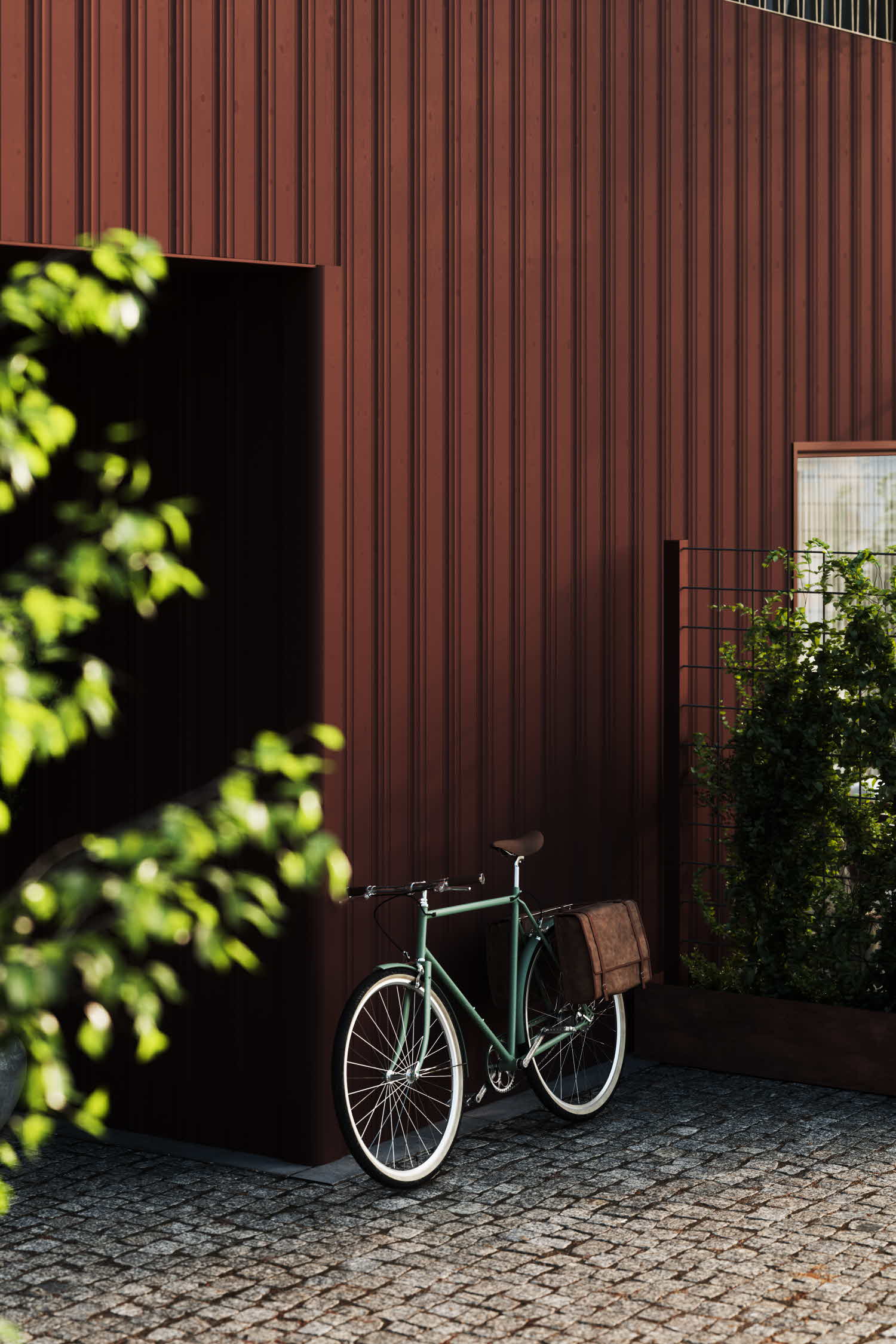
- INSPIRATION
- BEAUTIFUL, VARIED URBAN ENVIRONMENTS THROUGH HIGH-TECH CRAFTSMANSHIP
Urban environments through high-tech craftsmanship
- Article
A durable wooden facade system that can change character and take on audacious shapes is just around the corner. Camilla Schlyter is the architect behind the project, which unites traditional timber craftsmanship with high-tech digital design tools to develop a refined facade system that, with its many design possibilities, will help tomorrow’s architects to express their creativity.
As a child, Camilla Schlyter was already working beside her father to process logs and build using traditional methods. There and then, in Hälsingland, northern Sweden in the 1970s, a lifelong interest in woodcraft and sustainable building was born.
“My father collected old tools from the eighteenth and nineteenth centuries and we tried to figure them out and use them. Since then, I have always had an interest in wood and cultural heritage. Wherever I go in the world, I like to investigate the tradition of building in wood in that particular place,” explains Schlyter.
Digital tools meet craftsmanship
Camilla Schlyter was also an early adopter of digital design tools; by merging her twin specialities, over the last decade she has driven the development of a new timber facade system that offers unique opportunities for combining individual architectural design with large-scale industrial manufacturing. As a result, the new timber facade SCA Lynx has been created.
“Because the choices in wood are so limited, many timber framed buildings are clad in other materials. The objective is therefore to create a timber facade system that meets all quality requirements, that can be produced mechanically, is simple to install and at the same time offers a variety of characteristics that can be adapted to the designer’s ideas. Instead of mass production, we are talking about mass customization,” she explains.
A computer program varies the planing of boards to the architect’s specifications, so that they can design and assemble cladding in the manner they find most beautiful. The surface can be finished in a smooth or undulating form. The appearance of the facade will change constantly depending on how the light then falls on the building over the course of the day and year. Camilla Schlyter is keen to offer her fellow architects new opportunities to choose timber facades without compromising on expressive design.
“There is enormous interest in building in wood, but also in creating more refined facades. It would be a formidable task for individual architects to develop viable solutions themselves and this would not be feasible in a conventional project,” she says.
Historical inspiration strengthens environmental profile
By minimizing metal fixtures and avoiding impregnation and the use of other chemicals, the panels can also be part of a circular economy with the lowest possible environmental impact when the time comes to disassemble and reuse them.This strong environmental profile is reinforced by Camilla Schlyter’s embrace of traditional Swedish craftsmanship and the long-term sustainability of such methods. She has travelled around the country to learn more from those who still bear ancient knowledge of building in wood without glue or metal screws. An encounter with a carpenter in Ångermanland was one of many productive meetings.
“He showed me a technique using a spokeshave to create an incredibly beautiful surface on the log, which was one of the inspirations for the facade system.
Specialist collaboration a prerequisite
The system is being developed in collaboration with Rise Research Institutes of Sweden and Swedish Wood. Paint suppliers have also been involved in developing flame retardant topcoats for the system. The planing process has been tested and implemented in consultation with specialists at SCA Wood’s Stugun planing mill, where a plane has been developed that creates a surface to which paint sticks equally well as to traditional rough sawn panels.
“SCA Stugun has been involved throughout the development of both products and machines. Those who work with wood everyday have a feeling for the material and I have encountered specialist knowledge and great enthusiasm from everyone involved,” says Schlyter.
Top quality timber is of the utmost importance if a facade is to withstand the wind and weather over a long period of time. Pine heartwood was chosen for the system, although spruce heartwood is a good alternative. After years of research and development, a product launch is now on the horizon.
“It’s splendid that we’ve come this far! It is clear that developing this type of product demands close collaboration. By discussing input in our various areas of expertise, we can ensure that no aspect is overlooked. It’s fascinating to see the potential of the gradual development we have achieved through previous research projects.”
Modernizing and refining the cityscapes in wood
Whenever Camilla Schlyter returns to her childhood home in Hälsingland and walks among the aging timber buildings of Hudiksvall, she sees the model for the modern cityscape she wants to help create.
“At first glance, those old wooden houses all look relatively alike but on closer inspection you see that every cornice and window frame is slightly different. There’s a built-in variation in this familiar, delightful environment and that’s how I’d like our timber facade system to be used. Now, the opportunity is just around the corner.”
As the architect explains, beautiful buildings with distinctive facades are important to the city for many reasons. Variation makes us that little bit more aware of our surroundings and, eventually, makes us feel more strongly about them. Most of all though, it makes us happy.
“If you find yourself in an urban environment where someone has put thought into making it so beautiful that you want to applaud the facade, well, then you feel recognised as a citizen. It also creates a sense of civic pride over the building for those who live and work there.”